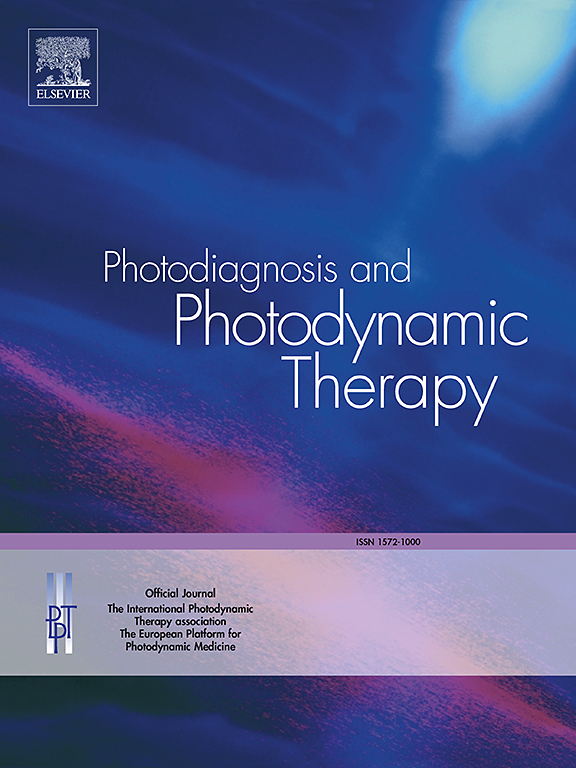屈光参差性弱视治疗前后视盘及黄斑微血管的比较分析。
IF 3.1
3区 医学
Q2 ONCOLOGY
引用次数: 0
摘要
目的:探讨屈光参差性弱视儿童视盘及黄斑微血管的变化。方法:随机选取阜阳市人民医院眼科门诊6 ~ 12岁单侧屈光参差性弱视患儿60例,随机选取同年龄段非弱视患儿60例作为正常对照组。对照组均匀取右眼,随访至少6个月。采用光学相干断层血管造影(OCTA)评价黄斑浅毛细血管丛(SCP)和深毛细血管丛(DCP)血管密度、视盘血管密度(VD)、中央凹无血管区(FAZ)面积、黄斑厚度、视网膜神经纤维层厚度(RNFLT)。结果:治疗前,弱视组视盘血管密度、黄斑SCP及DCP均显著低于同眼及对照组(P < 0.05),治疗后,弱视组视盘血管密度、黄斑SCP及DCP与同眼及对照组比较,差异均无统计学意义(P < 0.05)。弱视眼BCVA变化与视盘血管密度、黄斑SCP、DCP变化呈显著负相关(P0.05)。结论:屈光参差性弱视儿童OCTA黄斑及视盘血管密度较低,经治疗后可在一定程度上恢复到正常水平。本文章由计算机程序翻译,如有差异,请以英文原文为准。
Comparative analysis of optic disc and macular microvasculature in children with anisometropic amblyopia before and after treatment
Purpose
To evaluate optic disc and macular microvasculature changes in children with anisometropic amblyopia before and after treatment.
Methods
In all, 60 children with unilateral anisometropic amblyopia between the ages of 6 and 12 were randomly selected from the ophthalmology clinic of Fuyang People's Hospital, while 60 children with non-amblyopia in the same age range were randomly selected as a normal control group. The right eye was uniformly taken in the control group with at least 6 months of follow-up. Optical coherence tomography angiography (OCTA) was used to evaluate the macular vessel density of superficial capillary plexus (SCP) and deep capillary plexus (DCP), optic disc vascular density (VD), foveal avascular zone (FAZ) area, macular thickness, and retinal nerve fiber layer thickness (RNFLT).
Results
Before treatment, the vessel density of the optic disc, macular SCP and DCP in the amblyopic group was significantly lower than those in the fellow eyes and the control group (P < 0.05), while there were no statistically significant differences in the vessel densities of the optic disc, macular SCP and DCP between the amblyopic eyes, the fellow eyes, and the control group after treatment (P > 0.05). Statistically significant negative correlations were found between the alterations of BCVA in amblyopic eyes and the alterations of the vessel densities of the optic disc, macular SCP and DCP in amblyopia eyes (P < 0.05) except for superior nasal (SN) and inferior nasal (IN) regions of the optic disc radial peripapillary capillary, temporal and nasal regions of macular parafoveal SCP, nasal regions of macular parafoveal DCP and inferior regions of macular perifoveal DCP (P > 0.05).
Conclusion
Macular and optic disc vessel density in OCTA are lower in children with anisometropic amblyopia and tend to return to normal levels to a certain extent following treatment for amblyopia.
求助全文
通过发布文献求助,成功后即可免费获取论文全文。
去求助
来源期刊

Photodiagnosis and Photodynamic Therapy
ONCOLOGY-
CiteScore
5.80
自引率
24.20%
发文量
509
审稿时长
50 days
期刊介绍:
Photodiagnosis and Photodynamic Therapy is an international journal for the dissemination of scientific knowledge and clinical developments of Photodiagnosis and Photodynamic Therapy in all medical specialties. The journal publishes original articles, review articles, case presentations, "how-to-do-it" articles, Letters to the Editor, short communications and relevant images with short descriptions. All submitted material is subject to a strict peer-review process.
 求助内容:
求助内容: 应助结果提醒方式:
应助结果提醒方式:


